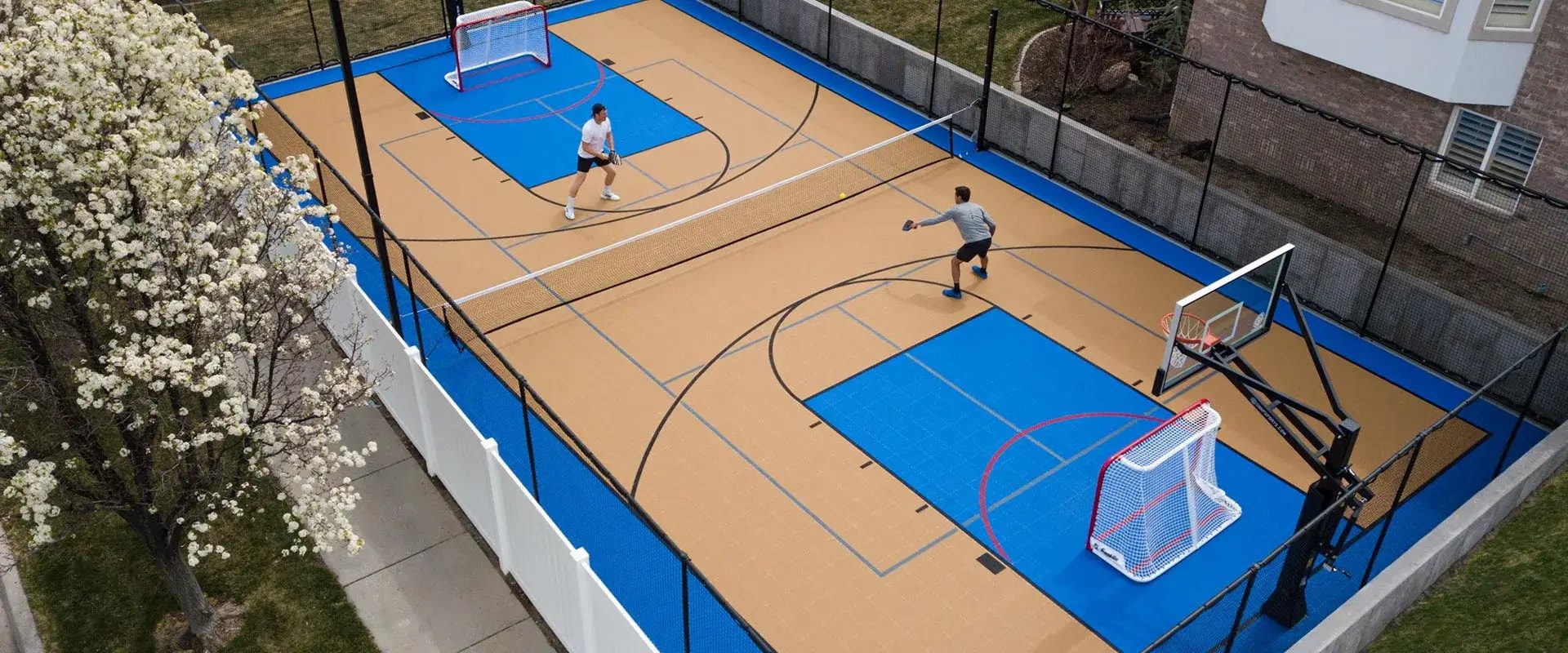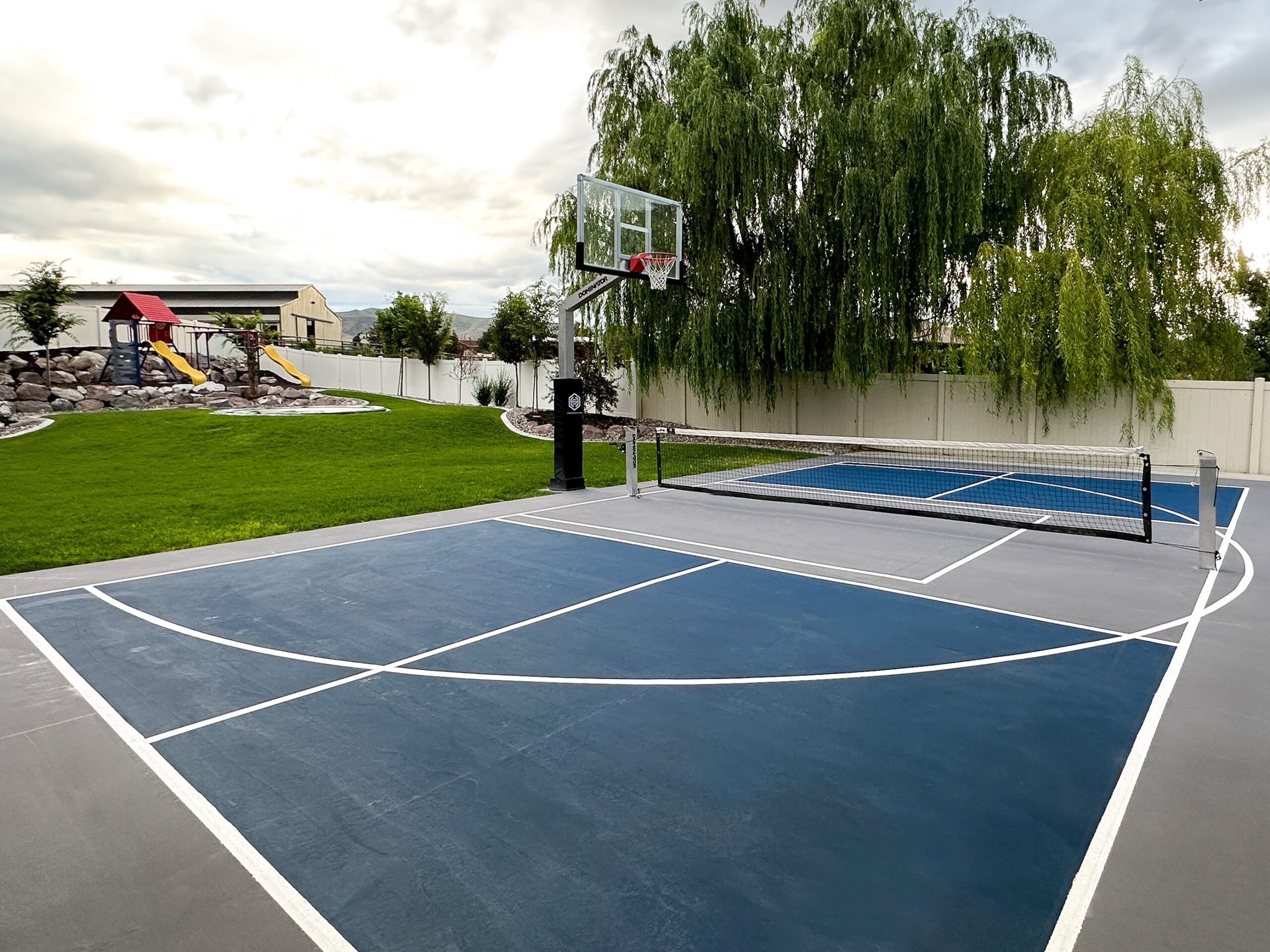Trick Factors in the Construction of Pickleball Judiciaries: From Website Choice to Last Coatings
The building and construction of pickleball courts incorporates a range of important elements, starting with the choice of an ideal website that stabilizes access with environmental factors to consider. Vital aspects such as court dimensions, surface products, and water drainage systems substantially affect not just the high quality of play however also the long life of the facility. Furthermore, interest to lights and completing touches can raise the overall experience for players and viewers alike. Understanding how each of these elements interrelates might disclose insights that are usually neglected, motivating a better assessment of finest practices in court building and construction.
Site Selection Criteria
When beginning on the building of pickleball courts, it is important to pin down the site choice criteria that will certainly ensure optimal playability and access. The place needs to be easily reachable for gamers, ideally located near houses or recreation center, to encourage engagement.
Moreover, the surface must be level and stable, as unequal ground can result in security risks and impact gameplay. Sufficient drain is additionally important; picking a site with great water runoff will certainly help maintain court conditions during unfavorable weather condition.
One more crucial consideration is the accessibility of utilities. Accessibility to electrical power and water is essential for illumination and upkeep functions. In addition, distance to auto parking centers is vital, helping with easy gain access to for gamers and spectators alike.
Environmental variables can not be ignored; all-natural shade from trees can boost gamer comfort, while exposure to prevailing winds might disrupt play. Zoning regulations and community support must be thought about to ensure that the project straightens with neighborhood standards and obtains the support it needs for successful implementation. By thoroughly examining these requirements, stakeholders can develop a welcoming and practical setting for pickleball enthusiasts.
Court Dimensions and Format
To make certain ideal gameplay and adherence to regulations, the measurements and format of pickleball courts must be thoroughly specified. A basic pickleball court gauges 20 feet in size and 44 feet in size for both singles and doubles play. The suggested layout includes a non-volley area, frequently described as the "cooking area," prolonging 7 feet from the web on either side. This area is important, as it affects player positioning and shot option - Illinois and midwest.
The web height is established at 36 inches at the sidelines and 34 inches at the center, developing a minor dip that impacts sphere trajectory. Court markings are equally important; lines need to be 2 inches wide and distinctive in shade to ensure presence.
In addition, a buffer zone surrounding the court is a good idea, commonly expanding 5 to 10 feet past the sidelines and standards to accommodate gamers' activities and improve safety. Proper design and dimensions not just guarantee compliance with official guidelines however additionally enhance the general having fun experience, accommodating both entertainment and competitive play. Careful planning in these locations is vital to the effective building and construction of pickleball courts.
Surface Material Options
Picking the best surface material for pickleball courts is important for making certain optimum player efficiency and safety. The option of surface area can substantially influence gameplay, consisting of sphere bounce, grip, and player comfort.
There are a number of options readily available, each with its visit our website distinctive qualities. Asphalt is a popular selection as a result of its resilience and low upkeep requirements. It offers a solid having fun surface that can hold up against various climate condition yet might need regular resurfacing.
Concrete is an additional commonly used product, offering exceptional durability and a smooth surface. It permits consistent sphere bounce however can be tough on players' joints, making it less preferable for lasting play without proper cushioning.
For those looking for enhanced comfort and shock absorption, cushioned acrylic surfaces provide a sensible option. These surface areas integrate a base layer with an acrylic topcoat, giving boosted traction and a softer feel, which is useful for reducing the risk of injuries.
Lastly, synthetic turf is acquiring grip, particularly for multi-purpose facilities. Its convenience and reduced upkeep needs make it an imp source eye-catching option, though it might not give the very same round action as standard hard courts. Cautious factor to consider of these alternatives will certainly ensure an ideal playing environment.
Drain and Lights Factors To Consider
Appropriate water drainage and efficient lighting are crucial elements in the building and construction of pickleball courts, substantially affecting both playability and security. Ample drainage systems avoid water build-up, which can cause unsafe surfaces and damage to the court structure. A properly designed drainage plan integrates sloped surfaces and suitable materials to facilitate water stream far from the playing area - Illinois and midwest. This not only maintains the honesty of the court however additionally reduces downtime because of inadequate weather.
Illumination is equally important, particularly for courts planned for night usage. Correct illumination improves presence, guaranteeing that players can see the sphere plainly and decreasing the danger of accidents. The placement of illumination components should be strategically prepared to remove darkness and supply even distribution of light across discover this the court. LED lights are advised for their power efficiency and long life, offering bright illumination while reducing operational prices.

Final Coatings and Maintenance
After addressing drain and lights factors to consider, attention transforms to the final surfaces and recurring maintenance of pickleball courts. Common choices include acrylic finishings and specialized sports surfaces that supply ideal grip and cushioning.

Seasonal upkeep could include resurfacing every couple of years, depending upon usage and ecological elements. Appropriately maintaining internet, court lines, and surrounding areas is equally important to provide a risk-free and enjoyable playing experience. By purchasing top quality surfaces and sticking to an organized upkeep timetable, facility owners can ensure their pickleball courts continue to be in excellent condition for many years to find.
Final Thought
In verdict, the successful building and construction of pickleball courts pivots on precise attention to several key elements. High quality finishes and a robust maintenance schedule are vital for maintaining the court's condition, improving the overall experience for players and spectators alike.